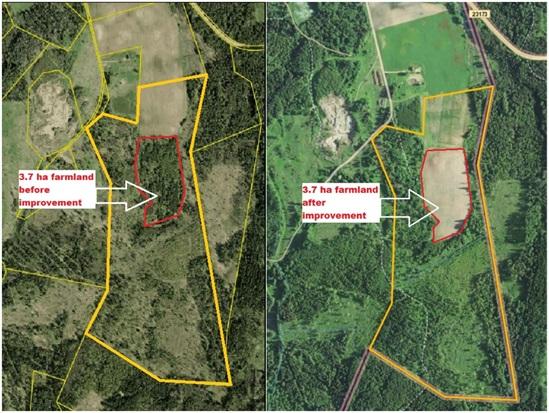Author: Peter Vind Larsen, Published: 13/12/2019 12:00:00
If the soil conditions and location are right, HD Forest’s clients have a possibility to take advantage of this by converting overgrown, old agricultural land back to active farmland. By doing so, we achieve two things; 1) revenue from renting out the agricultural land and 2) price increase on the land as it is converted from young forest to productive agriculture.
So far, we are only doing this in Estonia. Market demand for agriculture land in Latvia is not yet high enough to justify this conversion and in Lithuania we have almost no land of this type in our management.
The process of identifying and converting land
The conversion work has been contracted to the Estonian company EST Kinnisvara OÜ. Joel Peetsu of EST Kinnisvara is describing below how the process of identifying and converting suitable overgrown agriculture land takes place:
The process starts by looking at all the clients’ properties for land which is still classified as agriculture land, but not in use (desktop work with the maps). We look for cases where historically there has been farmland, but which currently is not used and is covered with bushes and trees or just abandoned.. After selecting those areas (based on the maps) we visited the chosen properties on the ground to make sure whether it will be technologically possible and financially reasonable to convert the areas.
After getting all the necessary approvals for felling whatever trees on the area, we organise the fellings. In some cases the felling activities generate some additional income to the clients, when the felled timber is worth more than the felling costs. Sometimes it is possible to sell the felled trees as firewood (or even pulp or logs), but in most of the cases the branches and bushes go as chips. In cases where the quantity (and/or quality) of the felled timber is low, the clearing takes along some costs instead of income.
Very often there are existing but not-functional drainage ditches located in the middle of the set-aside field or on the border of the abandoned field and the forest. Those ditches must be cleaned from bushes, trees and sediment to get the waters flowing. We typically use excavators for the drainage improvement works.
Once the ground and ditches are cleaned, the most expensive part of the improvement – mulching the ground – is necessary to carry out (not in all cases, but when there are stumps, irregularities, hills and bumps that need to be crushed and smoothed out.
VIDEO (above): The mulching machine at work.
Through this farmland and drainage improvement the land value can be increased by 3 – 4 times. For example, set-aside and non-productive farmland that is in the “other land” category, has a market value not more than 1,000 EUR/hectare. After improving the abandoned farmland, getting it registered as eligible for EU subsidy and renting the land out to active farmers, the value of such productive farmland is usually between 3,000 – 4,000 EUR/hectare in Estonia.
Before any cost-related land improvement activity, EST Kinnisvara always puts together detailed budget to the client. Once the client approves the budget and the improvement activity, we start with the project on the property which may take a year from start to finish. The average improvement cost is up to 2,000 EUR/hectare – it includes all the subcontractors expenses (e.g. clearing/felling, levelling and mulching) as well as EST Kinnisvara project management cost (which is 250 EUR/hectare).
All payments will be billed to the clients after the works are completed, the farmland actually improved and the exact hectares of new farmland can be measured. We do not charge any fee for the initial desktop works (re-classification). but only for those hectares where the farmland has been improved on the ground.
For today, EST Kinnisvara has completed the improvement of 206 hectares new productive Estonian farmland during the previous 2 years. All these areas have been registered in the Paying Agency as eligible for EU subsidy. During the following 2 years we plan to improve at least 150 additional farmland hectares and increase the value of the clients’ farmland portfolios through this activity.

Sample of 3.7 hectares of farmland improvement process (before and after).
To read more about Estkinnisvara’s services in commercial real estate investment and agricultue land improvement in Estonia, please have a look at https://investadvisors.ee/


